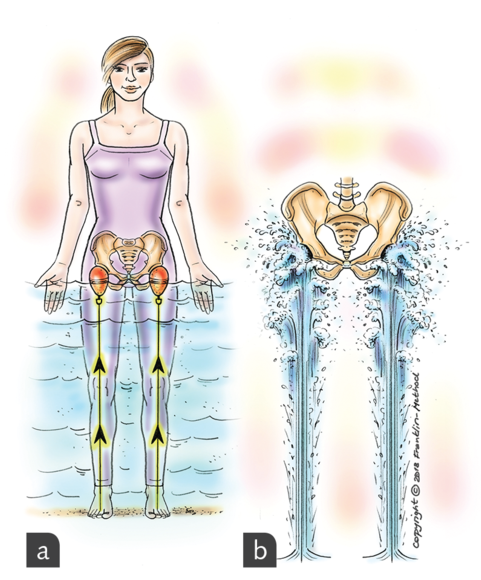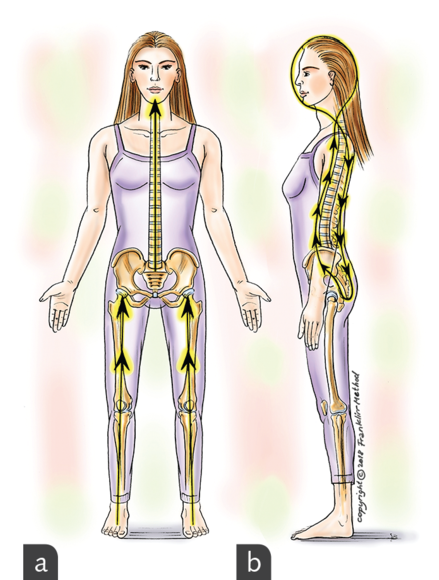Tadasana: Mountain Pose
This is an excerpt from Understanding the Pelvis by Eric Franklin,Alison Wesley.
One age-old image of mountain pose is as a posture of stillness. That stillness often equates with strength and connection. It is the aim of yoga, after all, to cultivate stillness. But is stillness merely the absence of motion or is it a constant, subtle balancing act?
Mountains are crawling with life: the slow and imperceptible growing of trees and greenery, the current and flow of rivers and streams, the movement of animals, birds, and insects.
Let your mountain move. Acknowledge the movement of all of this life and the beautiful wisdom of the body to allow you to sway. In the Franklin Method we call it postural sway; it's one way to keep your body from getting tired when you have to stand for a long period of time, by distributing and redistributing forces and weight to different muscles and areas of the body.
Imagine that your mountain pose is strong and stable because of its ability to adapt. Allowing for three-dimensional, relaxed breathing, this is a sort of home base to return to again and again. Experience this healthy posture as a movement rather than as a set of bony points that need to remain in the exact same relationship. Imagine your strength as being free and ready to move in any direction. Find stillness inside movement.
Common cues associated with the pelvis and what might go wrong:
- "Lengthen your tail" or "tuck your tail" seems like a quick fix for an overarched low back or an anteriorly rotated pelvis, but it can easily create another issue of a tucked-under position, which is already a challenge with our human standing posture. This common cue can create tension in the pelvic floor and the abdominals, which prevents good breathing. Tucking your tail also creates tight hips because it counternutates the sacrum. Furthermore, if this posture is the starting point for other standing postures, those patterns of tension will translate to other poses as well (like a forward-thrust pelvis in virabhadrasana I, for example).
Possible images, cues, and ways in:
- In the Franklin Method we say "get on your femur heads." What this means is visualizing your femur heads and sensing your weight poised over them. Feel the weight as equal on both femur heads, and not in front or in back of them.
- The purpose of human dynamic posture is to be able to get into motion with ease. Hip flexion should be available to us at any time. In tadasana you should be able to move right into utkatasana pose without having to unlock your hips or your knees. A dynamic version of tadasana forms the baseline for any further movement and is a functional rehearsal for great posture in daily life.
- Rock your body weight forward and back and side to side until you find a natural place of center to rest your weight. Do the same exploration with your pelvis, shifting forward and back and side to side to find the place where you experience being centered.
- Bend the knees slightly to feel the deepening of the hips and imagine the femur heads like buoys that are lifting the pelvis (figure 33).
- Instead of lifting the kneecaps, as is so often taught, keep the knees soft to create a dynamic buoyancy.
- Sense the general flow of energy up the front and down the back (figure 34). Apply this to the pelvis specifically and to the entire body.


SHOP

Get the latest insights with regular newsletters, plus periodic product information and special insider offers.
JOIN NOW
Latest Posts
- Women in sport and sport marketing
- Sport’s role in the climate crisis
- What international competencies do sport managers need?
- Using artificial intelligence in athletic training
- Using the evidence pyramid to assess athletic training research
- How can athletic trainers ask a clinically relevant question using PICO?


